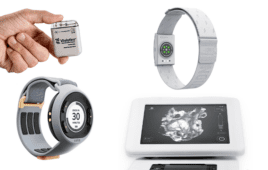Ever since the Venice Arsenal started mass producing ships in the world’s first factory in the 13th century, manufacturers have been driven by the need for speed. In today’s environment, consumers demand for new products is driving ever shorter product lifecycles. Manufacturers are consistently looking to turn and produce products at ever increasing speeds to remain competitive. Superior quality and a low price are a given for companies to be in the race. What differentiates the winner in this new manufacturing competition is the ability to react quickly, produce fast, and deliver even faster.
From mobile phones, home computers, and even automobiles, new designs, improvements, and consumer whims are forcing companies to make rapid adjustments to their manufacturing process to remain in the game. How many cell phones has the average person owned over the past decade? How many variations of computers? The constantly changing global marketplace is driving companies to maximize productivity and quality at the lowest cost and they must do it faster than the competition. They are asking themselves, “How fast can we deliver and how fast can we design the next generation of product?” Speed is today’s new competitive advantage.
 |
It doesn’t take a leap of faith or a calculator to conclude that the higher the production rate the lower your cost per unit will be. After all, if a company can make twice as many widgets as its competitor in the same amount of time the advantage is obvious. Speed remains automation customer’s most pressing requirement today.
Manufacturers looking to increase production speeds naturally look to automation to eliminate the tedious, slow, and repetitive processes on the production line. Robots can increase a manufacturer’s production. SCARA, 6-axis, and delta robots are commonly used in high speed manufacturing.
Delta Robots
Many companies have adopted the use of Delta robots whose multi-arm design is particularly well suited for manipulating objects at a very high speed. The Delta robot (a parallel arm robot) was invented in the early 1980s by Reymond Clavel at the Ecole Polytechnique Federale de Lausanne in Switzerland. The purpose of this robot was to manipulate light and small objects at very high speeds. In 1987, the company Demaurex purchased a license for the Delta robot and started the production of Delta robots for the packaging industry. Originally the Delta robot was patented and, as a result, sources for them were limited to three companies: the original patent holder Demaurex SA, SIG pack, and ABB Flexible Automation. However, that patent expired at the end of 2007.
Delta robots are a type of parallel robot, meaning that the end effector is connected to the base by multiple kinematic chains. Typically consisting of three arms connected to a universal joint at the base, a Delta robot uses parallelograms in the arms to maintain the orientation of the end effector. Parallelograms restrict the movement to the X, Y, or Z direction. Because the actuators are in the base and the arms are made of lightweight composite materials, these robots can reach extremely high speeds. This makes them very popular in picking and packaging. Delta robots can execute up to approximately 150 picks per minute. The robot’s base is mounted above the workspace. From the base, three middle jointed arms extend. The ends of the three arms are connected to a small triangular platform. Actuation of the input links will move the triangular platform in the X, Y, or Z direction. From the base, a fourth leg extends to the middle of the triangular platform to give the end effector a fourth rotational degree of freedom.
The Next Level
One of the fastest Delta robots (twice as fast as conventional robots) comes from Adept Technology Inc. The Adept Quattro s650 parallel robot is specifically designed for high-speed manufacturing, packaging, material handling, and assembly. It features a unique four-arm rotational platform designed for maximum speed, maximum acceleration, and exceptional performance across the entire work envelope. Additionally, the powerful embedded amplifiers and compact controls make installation easy and enable saved workspace. The Adept Quattro robot offers major advantages over the traditional three arm Delta style kinematic. Using four arms instead of three, allows for faster cycle times and better payloads than traditional three arm Delta robots. With 4 arms, you get rotation rather than having an extra telescoping joint as is required on traditional robots. Featuring integrated vision and tracking, the Quattro robot can pick parts from a moving conveyor belt at the rate of up to 180 parts per minute. The Quattro robot typically mounts on a rigid overhead frame above the conveyor and uses its integrated vision system to locate the parts.
The robot unit itself costs twice as much as a conventional SCARA or 6-axis robot, however, it delivers twice the throughput. Since integration costs are the same, the difference in the total installed cost is equal to the difference in robot cost, however, you get twice the throughput. So in the following example, for the extra $25,000, the user gets twice the throughput. When the cost per part is calculated out, a conventional robot system cost 1.714 times as much per part as a Quattro system. Plus Quattro produces 24,480,000 parts over two years out of the same amount of factory space. In many factories, fixed expenses can represent 10-15% of the total product costs and since they are fixed, they can be spread over the extra volume, offering even more savings.
Conclusion
Manufacturers who want to remain competitive must consider the avenues that will allow them to increase production and production speed. Delta robots specifically designed to meet that challenge may be the best option for companies wanting to keep ahead of the pack.




